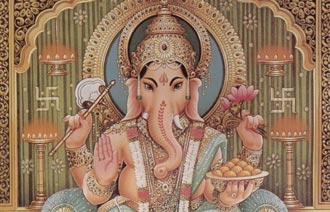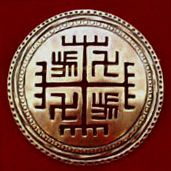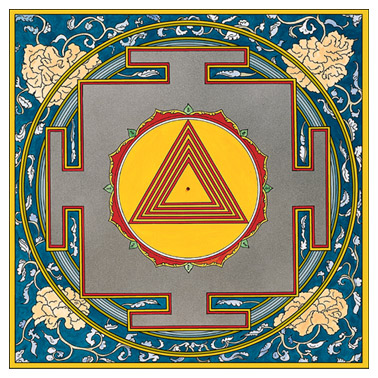
![]()

![]()
Om Shri
Ganeshaya Namah
Copyright (c) George Sipos (Please, ask for permission if interested to
copy/reproduce this text.)
Forgive me in case some pictures
are proprietary. It is not nice when someone takes something and makes profit
from it. I tried to do my best to resolve the copyright issue of pictures included
herein, but some websites simply did not have a copyright notice, or were written in Japanese
- the language I cannot write in to ask for copyrights. This
is not a commercial website and it is purely intended for dissemination of information.
Sanatana means eternal, never ending and never starting...
The word Dharma also means the Way to Liberation; in Mahabharata, Dharma is
the God of Justice.
Sanatana Dharma is eternal community.


The above images of Ganesh and
Skanda published with kind permission of the Murugan.org website:
http://murugan.org/
Life on Earth has ONE history of the Beginning...
Ganesh and Skanda are the important Hindu Gods and
Hinduism is one of the oldest documented religions
in the world. Images of Ganesh were also found in South America from times of
the pre-Columbian era. Some say that one cosmological system could be here that
had developed in ancient times all over the world.
![]()

Mushikavaahana modaka hastha,
Chaamara karna vilambitha sutra,
Vaamana rupa maheshwara putra,
Vighna vinaayaka paada namasthe
The
word Ganesha means Lord of Hosts. This God is the Lord of good
fortune; He is the Remover of obstacles.
Sanatana Dharma
The etymological origin of the
word "Hinduism" was developed later and its roots had been brought by conquerors
of the then Indian subcontinent. Slavic people have several common things with
Indians - for example, the word "Hindu" originally also had something to do
with the word "slave" (Slavic). The Slavic pre-Christian god of the sun, Swarog,
is tightly associated with swastika (Hindu symbol; but it is found in many cultures
including the ancient Jews.).

| The "Hands of God" - the old pre-Christian symbol of Swarog - Slavic god of the Sun. In neo-pagan religions, Swarog is often the supreme god-creator and the central part of the (holy) trinity Triglav. A very interesting similarity with Swarog has the word "Swarga", which is a set of nether worlds located on the svastika mountain - Mt. Kailash in Tibet. |
(More information about this god,
as well as about the svastika symbol, can be found in Wikipedia.)
Every country has rich history.
In Slovakia, the oldest surviving archeological artifacts date back to 270,000
BCE, the Early Paleolithic Era, which were found near Nové Mesto nad
Váhom (source: www.slovakia.org). These
excavations confirm the existence of very ancient inhabitants of the geographical
region known today as Slovakia. Our national flag has a double cross and
three hills almost identical to the hills of the Slovenia's flag, which picturizes
Mt. Triglav - the mountain with the name of the ancient Slavic Trinity of Gods
(similar to Hindu Trimurti) in the beautiful terrain of the Julian Alps (Slovenia/Italy).
Better term for Hinduism
is therefore *Sanatana Dharma*. Of this belief, evolutional forms of Hinduism
- Buddhism, Jainism... evolved. There are three mainstream religions in India:
Hinduism, Islam and Christianity (except for smaller denominations like zoroastrianism,
jainism, etc.).
Before the arrival of Buddhism
to Tibet, Bön religion, described as the shamanistic one, had flourished
in the Himalayas. This religion used svastika too.
Hinduism or Sanatana Dharma is a faith in God that underpins the basic humane principles of brotherhood, kind-heartedness and pursuit of good life in search of God. This religion believes in eternal reincarnation of which you may set yourself free by various practices and come to a higher state of Being called moksha - liberation. Christians have salvation, Hindus moksha, and Buddhists nirvana. Hindus believe that God is ONE, but He has many forms.
![]()
Continuation
of the article about Lord Ganesh: His birth, some history,
and abuse of svastika
